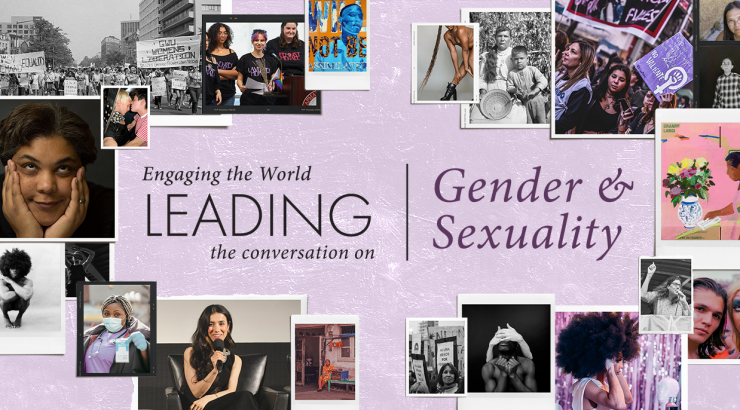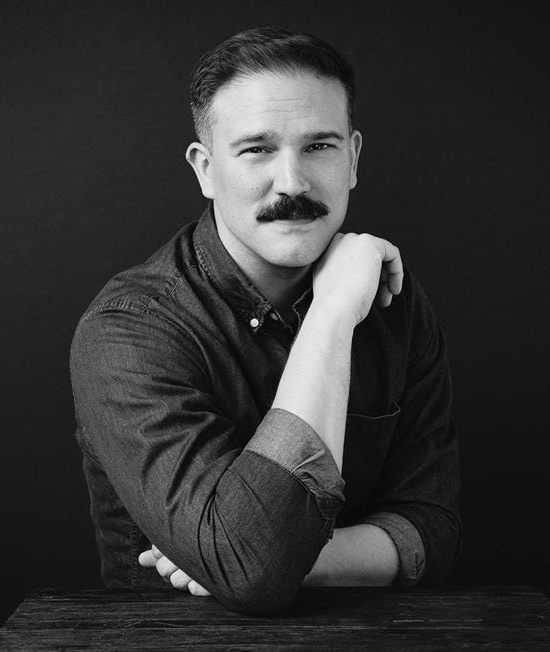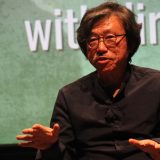
From Our Eyes: Charlie Jensen – The Humble Writer with a Brilliant Touch
November 25, 2024

Charlie Jensen
This edition of From Our Eyes features Emma Niro (’25 MFA Creative Writing) who attended the poetry talk and reading with writer Charles Jensen. The event, co-sponsored by Wilkinson College of Arts, Humanities, and Social Sciences, ETW: Leading the Conversation on Gender and Sexuality series and Tabula Poetica, featured Jensen reading excerpts from his poetry collections including his most recent work, Splice of Life: Memoir in 13 Film Genres. Niro reflects on the event, what it meant to her, and how she will never look at the movie Scream the same again.
Charlie Jensen is, despite him telling me otherwise, a brilliant writer. I say writer because when I asked him if he considers himself more of an author or a poet, he said he wasn’t sure and that when people ask him what he does for a living, he says, “Writer, because it encompasses all.”
As I walked up to Jensen, I immediately got a calm Freddie Mercury energy. Perhaps because his mustache immediately reminded me of Queen’s lead singer, or, because his laugh seemed to be the star of any room he walked into. However, if Jensen were to read this, he would say, as he did after I introduced him to the audience, “I hope I can live up to this intro—” ever the modest man.
As Jensen stood in front of the mic and began reading from his unconventional poetry book Instructions between Takeoff and Landing, and his even more unconventional book Splice of Life: A Memoir in 13 Film Genres, I felt the energy in the room shift. I have never seen a group of students give their undivided attention to a guest speaker like they did with Jensen.
Jensen hypnotized the room as he launched into his memoir, which combines a queer analysis of popular films while detailing his personal, queer journey. The room let out a surprised chuckle as Jensen gave a slew of details to make the unarguable case that Billy and Stu—the infamous ghost face killers in the movie Scream—are gay lovers. His reasoning, such as Billy telling the protagonist Sydney that she was bad in bed, felt like the biggest no, duh moment I’ve ever experienced. I will now always watch Scream with a queer lens. At the same time that Jensen described the queer coded-ness in Scream, he also shared a more personal side. Jensen admitted that he came out before he was ready to come out. He confessed that he wished he could tell his younger self, “That’s great that you know this about yourself. But not everybody has to know.” Coming out does not mean you understand yourself and your queerness inside and out. Oftentimes, people come out before they are truly ready to do so even if they say and think that they are.
Jensen next read from Instructions between Takeoff and Landing. From reading a poem about his fear of flying to him coming to terms with his mortality with humorous lines about dying before writing a book “better than Twilight but shorter than Dune,” to acknowledging that he might die for being a gay man, the audience responses ranged from laughter to thoughtful hums, to reverent silence. We all resonated with at least one thing Jensen said. I felt shocked by the humanness of it all. We are a diverse group of people. People of different sexualities, genders, mental illnesses, ethnicities, races, religions, and writing styles. Yet we all responded in the same way to Jensen’s words like we were one collective human.
Accompanying many of Jensen’s poems were small, existential crisis-like quizzes. In the poem “The Water Cycle,” Jensen poses the question: “d. Who is the villain of this story, and every story?” In the poem “Memory,” Jensen writes: “d. Describe a place that you’ve visited that was always cold.” These thought-provoking and sometimes ridiculous questions gave me the itch to answer, to respond to Jensen. Instructions between Takeoff and Landing is an interactive art form where the reader is just as much a part of the art as the author and the words themselves. It’s call-and-response, a question answered with more questions. I fear Jensen gave me an existential freakout. Still, did I buy the book? Absolutely. Even better, I had it signed.
As our time together came to an end, Jensen gave us a treat and shared his most recent, unpublished work. My personal favorite was the last poem he shared with us: “To My Belle.” I don’t want to spoil such beauty, but think it will be something great to behold once published. That said, I will say, if you and your partner ever get into an argument, just read them this poem.
You will always win.
I cannot recommend Jensen’s work enough because it is not just work; it is art. And the readers are just as much a part of it. I would argue Jensen’s work is incomplete until it is in the hands of a reader; his work is interactive. I left feeling like I knew Charlie Jensen as more than a brilliant writer, but a friend. I cannot wait to see what he does next.

